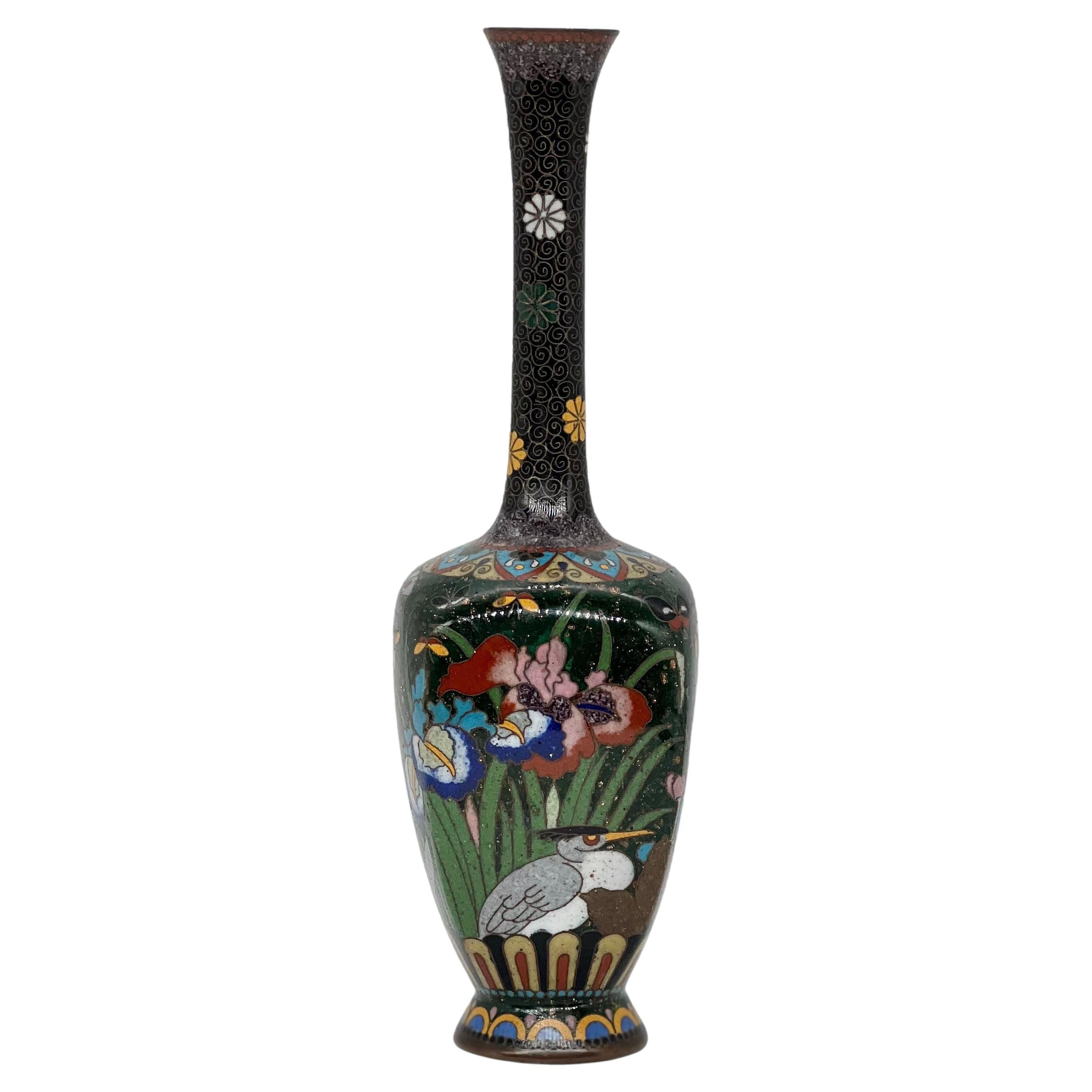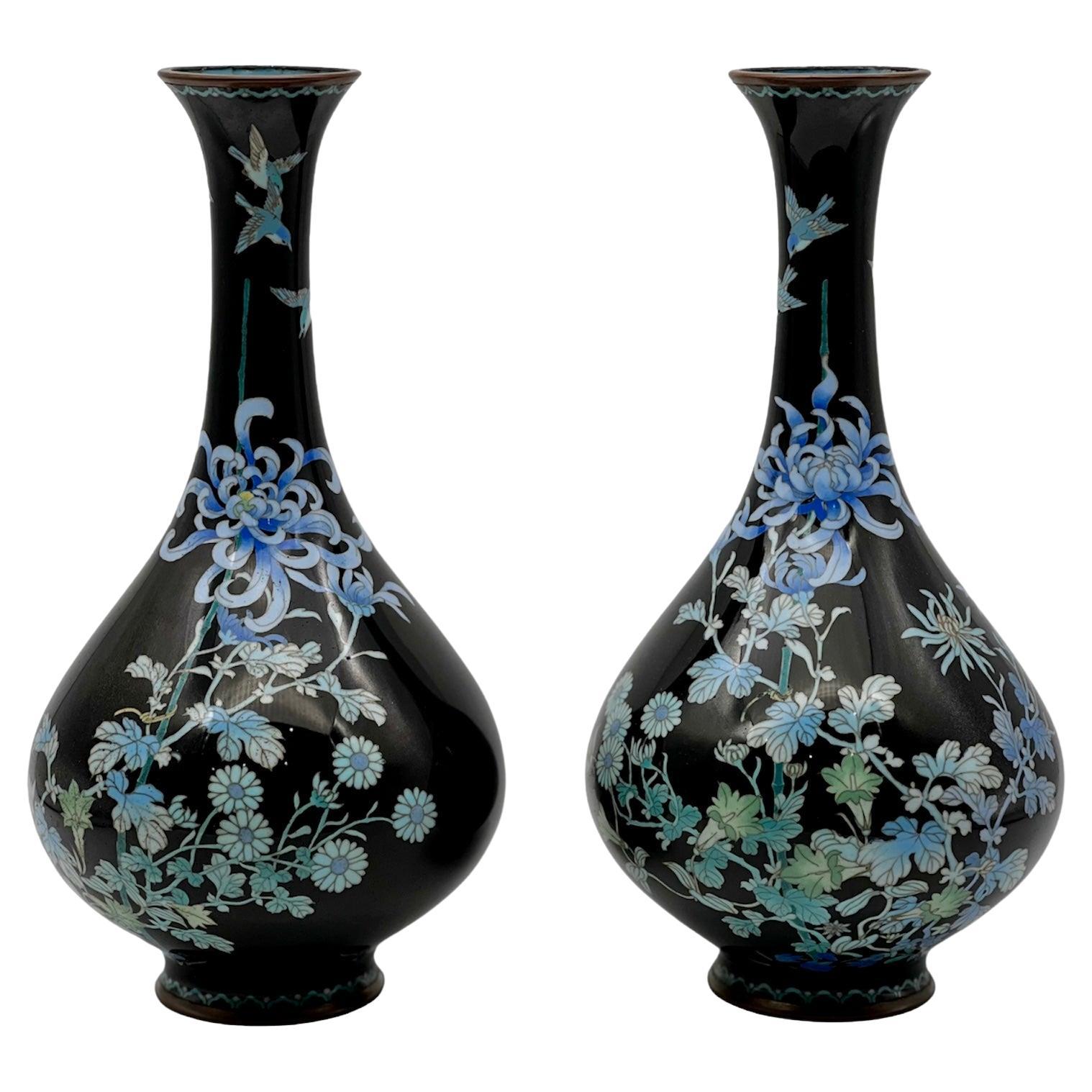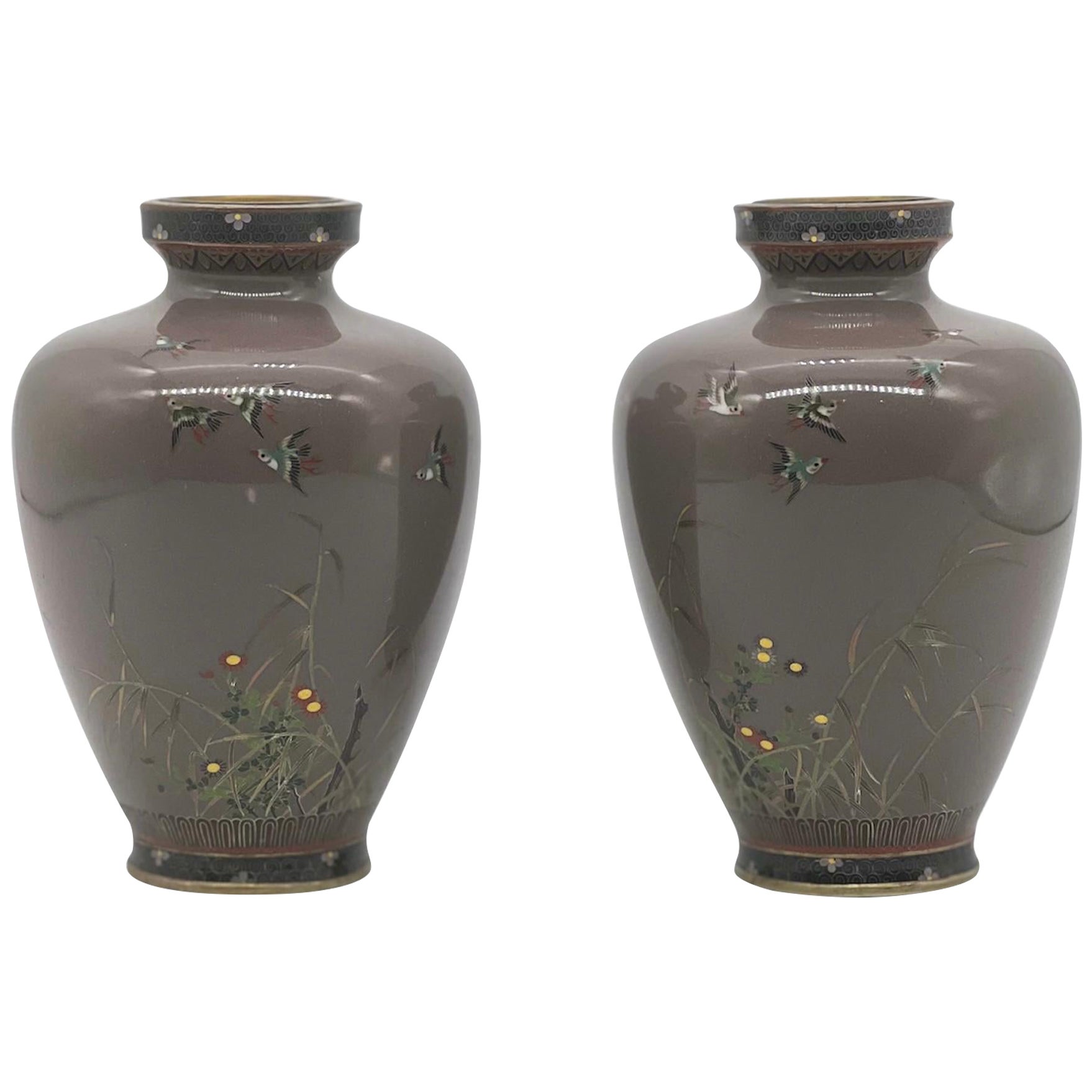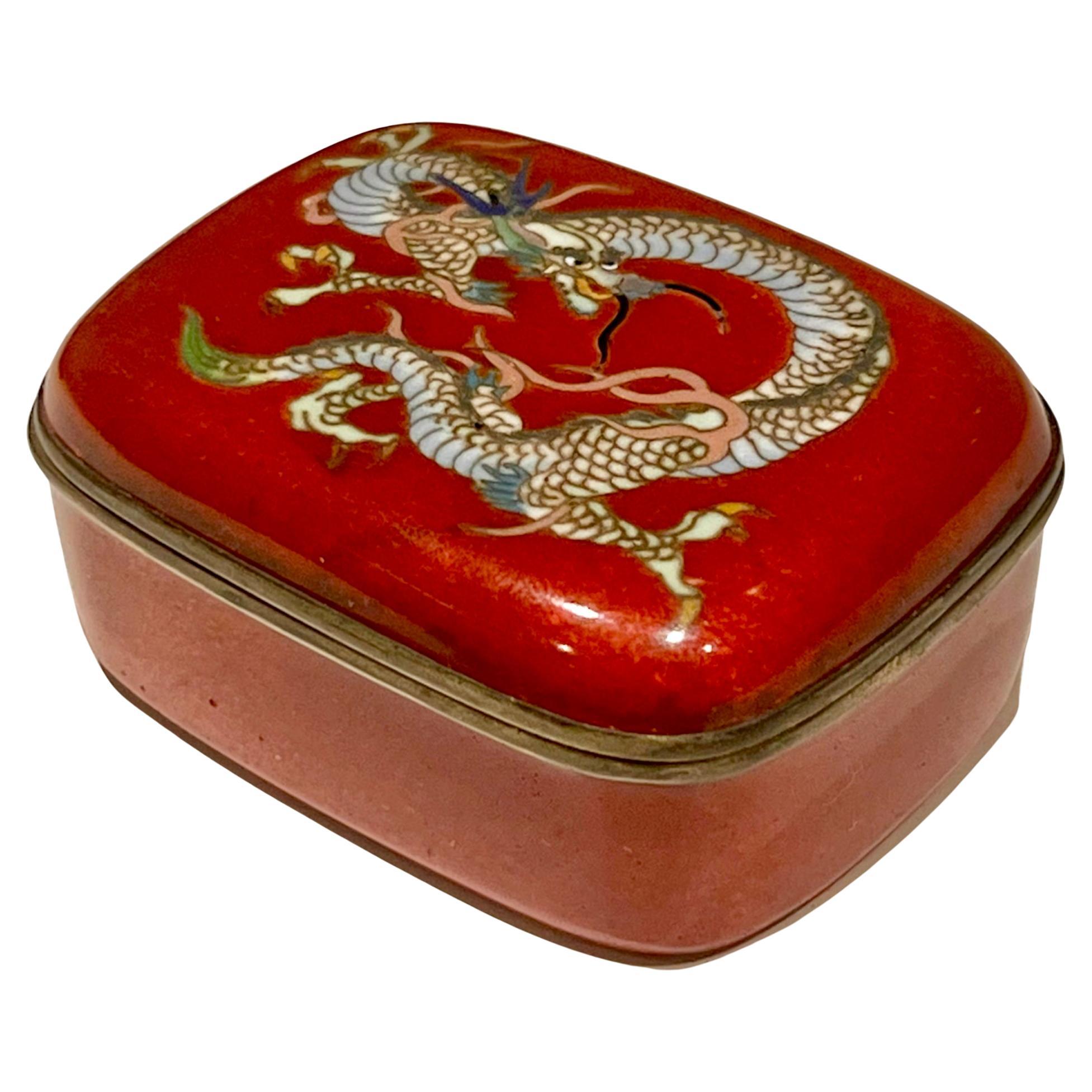Items Similar to A Fine Opposing Pair of Japanese Cloisonne Enamel Vases. 19th C
Want more images or videos?
Request additional images or videos from the seller
1 of 18
A Fine Opposing Pair of Japanese Cloisonne Enamel Vases. 19th C
About the Item
A Fine Opposing Pair of Japanese Cloisonne Enamel Vases. 19th Century.
OPPOSING PAIR OF JAPANESE CLOISONNE ENAMEL VASES,
Meiji Period (1868-1912), worked in silver wire and decorated with a kingfisher perched amongst flowers and leaves, against a dark blue ground.
H- 15.2cm high (2)
In Good condition.
- Dimensions:Height: 5.91 in (15 cm)Width: 2.37 in (6 cm)Depth: 5.91 in (15 cm)
- Sold As:Set of 2
- Materials and Techniques:Enamel,Cloissoné
- Place of Origin:
- Period:
- Date of Manufacture:circa 1890
- Condition:Wear consistent with age and use.
- Seller Location:London, GB
- Reference Number:
About the Seller
No Reviews Yet
Vetted Seller
These experienced sellers undergo a comprehensive evaluation by our team of in-house experts.
Established in 2001
1stDibs seller since 2023
5 sales on 1stDibs
- ShippingRetrieving quote...Ships From: London, United Kingdom
- Return PolicyA return for this item may be initiated within 7 days of delivery.
More From This SellerView All
- Fine Japanese Kyoto Shippo Cloisonne Enamel Vase, 19th CLocated in London, GBA fine Japanese Kyoto Shippo Cloisonne enamel vase 19th C Meiji Period JAPANESE CLOISONNE ENAMEL VASE,?decorated with cranes and butterflies amongst lotus and iris blooms reser...Category
Antique Mid-19th Century Metalwork
MaterialsEnamel
- A Fine Pair Pair of Japanese Cloisonne Enamel Oviform Vases. Meiji period.Located in London, GBA Magnificent Pair of Japanese Cloisonne Enamel Oviform Vases 19th Century Meiji period A Pair of Japanese cloisonné enamel oviform vases worked with silver wire and decorated wit...Category
Antique Late 19th Century Japanese Metalwork
MaterialsEnamel
- A Fine Pair of Japanese Cloisonne Enamel Vases Attributed to Hayashi KodenjiLocated in London, GBA Exquisite Pair of Japanese Cloisonne Enamel Vases Attributed to Hayashi Kodenji. Meiji period 19th Century A Fine Pair of Japanese cloisonné ename...Category
Antique Late 19th Century Japanese Metalwork
MaterialsEnamel
- Lovely Pair of Antique Meiji Period Japanese Ginbari Cloisonne Vases, 19th CLocated in London, GBA Lovely Pair of Antique Meiji Period Japanese Ginbari Cloisonne vases. 19th C A Fine pair of Japanese Ginbari cloisonne vases , Meiji period (186...Category
Antique Late 19th Century Japanese Metalwork
MaterialsEnamel
- Exquisite Japanese Cloisonne Enamel Box and Cover. 19th CLocated in London, GBA Exquisite Japanese Cloisonne Enamel Box and Cover. 19th C Meiji Period Of rounded rectangular form, worked in silver wire with an intricate co...Category
Antique Late 19th Century Metalwork
MaterialsEnamel
- A Fine Japanese Cloisonne Enamel Vase and Cover. Meiji PeriodLocated in London, GBA Exquisite Cloisonne Enamel Vase and cover Meiji period -Late 19th C Exquisite and refined four sided cloisonne vase and cover made in gold and silver wire with dragons and phoen...Category
Antique Late 19th Century Japanese Metalwork
MaterialsEnamel
You May Also Like
- Japanese Cloisonne Enamel Vase Ando CompanyBy Ando JubeiLocated in Newark, EnglandJapanese cloisonne enamel vase. The vase of ovoid form with circular opening, black enamel glaze and silver mounted rims. Boldly decorated with autumnal flowers and birds. To the top and bottom geometric patterns finish the vase. Notes Ando Cloisonné...Category
Early 20th Century Japanese Meiji Metalwork
MaterialsMetal, Silver, Enamel
- Large Pair of Japanese Cloisonne Enamel Vases Attributed to Honda YasaburoLocated in New York, NYA large pair of Japanese Cloisonne Enamel vases attributed to Honda Yasaburo, 19th century. Finley decorated with the rich enamel colors of orange and green, these vases are desig...Category
Antique 19th Century Japanese Meiji Metalwork
MaterialsCopper, Enamel
- Large Pair of Meiji Period Japanese Cloisonne Enamel Double Dragon VasesLocated in New York, NYA large pair of Meiji Period Japanese Cloisonne Enamel Double Dragon Vases, 19th century. Japanese cloisonne enamel dragon vases are highly ...Category
Antique 19th Century Japanese Meiji Metalwork
MaterialsCopper, Enamel
- Large Pair of Meiji Period Japanese Cloisonne Enamel Vases Attributed to GotoLocated in New York, NYA large pair of Meiji Period Japanese cloisonne enamel vases attributed to Goto Seizaburo, 19th century. These vases were made during the Meiji period (1868-1912) in Japan and are...Category
Antique 19th Century Japanese Meiji Metalwork
MaterialsCopper, Enamel
- Very Large Pair of Fine Quality Japanese Bronze Vases - Antique, 19th Century MeLocated in Wisbech, CambridgeshireAntique Very Large Pair of Japanese Bronze Vases - Exquisite Meiji Period Artist Pieces! These magnificent Japanese bronze vases, dating back to the 19th Century Meiji Period, showc...Category
Antique 19th Century Japanese Metalwork
MaterialsBronze
- Large Pair of Japanese Cloisonne Enamel Lanterns Attributed to Kaji TsunekichiLocated in New York, NYA Large Pair of Japanese Cloisonne Enamel Lanterns Attributed to Kaji Tsunekichi, Edo Period, 19th century Japanese cloisonne lanterns were made during the Meiji period, from the late 19th to early 20th century, and were often used as decorative lighting fixtures in temples and shrines. Kaji Tsunekichi (1866-1916) was a Japanese cloisonné artist who was active in the late 19th and early 20th centuries. He was born in Tokyo and learned the art of cloisonné from his father, Kaji Sataro, who was also a cloisonné artist. He was renowned for his mastery of the shippo-yaki technique, which involves creating intricate designs with thin wires on a metal base before filling in the spaces with enamel. Tsunekichi was known for his exceptional technical skills and his ability to create intricate designs with vibrant colors. His works often featured nature motifs, such as flowers, birds, and fish, which were rendered in a highly detailed and naturalistic style. He also experimented with new techniques, such as plique-à-jour, a type of cloisonné that creates a stained-glass effect. Tsunekichi's works were highly prized during his lifetime and continue to be sought after by collectors today. He won numerous awards for his cloisonné creations, including a Gold Medal at the 1900 Exposition Universelle in Paris. His works are characterized by their fine wirework, precise enamel application, and attention to detail. Some of Tsunekichi's most famous works include a pair of large cloisonné vases...Category
Antique 19th Century Japanese Edo Metalwork
MaterialsCopper, Enamel
Recently Viewed
View AllMore Ways To Browse
Art A Pair
Fine Art Pairs
Antique Enamel Vase
Enamel Japan
Japanese Enamel
Cloisonne Enamel
Antique Silver Wire
Opposing Pair
Cloisonne 19th
Antique Cloissone
Cloisonne Enamel Vase
Japanes Cloisonne
Japan Cloisonne
Japanese Cloisonne
Japanese Silver Enamel
Japanese Silver And Enamel
Antique Japanese Cloisonne
Pair Blue Asian Vases





